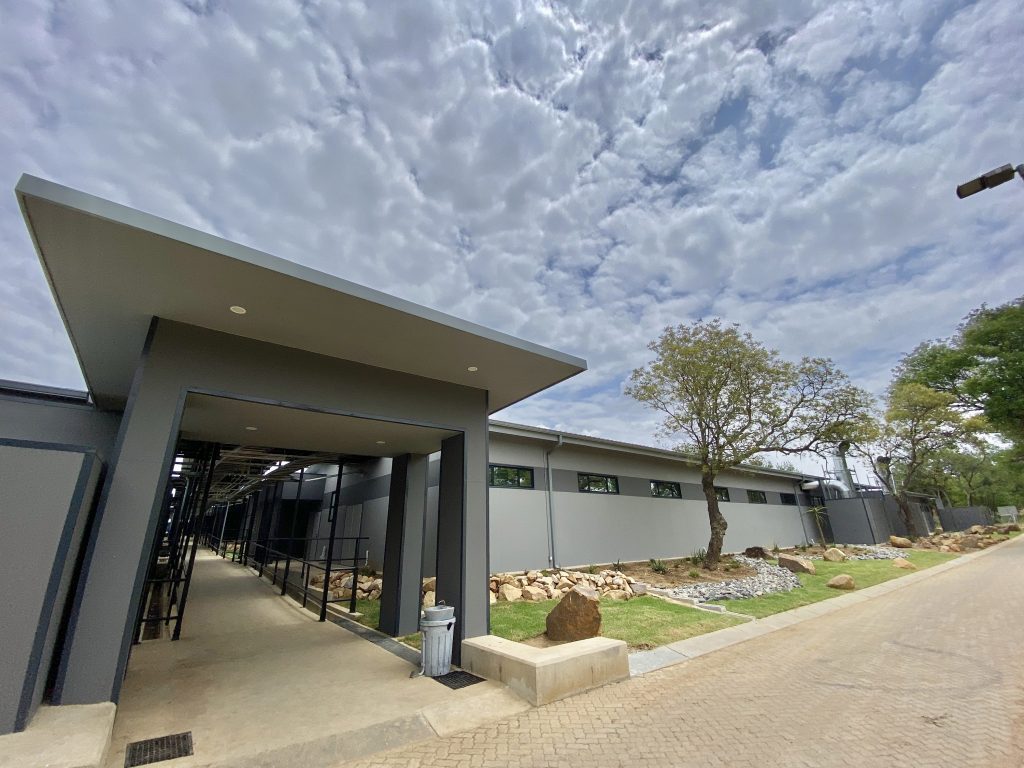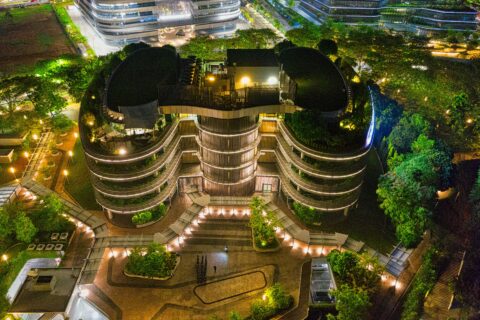Infrastructure PR
Concor Speedily Delivers Completed COVID Hospital
The turnkey project in Hammanskraal north of Pretoria saw ten modular units handed to the Gauteng Department of Health, adding another 300 beds to care for Covid-19 patients. The facility has five 25-bed intensive care unit (ICU) modules – complete with a two-bed isolation ward – and five 35-bed high care modules.
According to Lucas Tseki, Chief Executive Officer at Concor, choosing the modular approach meant units could be completed and put into operation while others were still being constructed.
“This was a demanding project in terms of its timeframe,” Tseki says. “However, applying appropriate technologies alongside our extensive experience, we met deadlines while complying with national building standards and without compromising safety or quality.”
Significantly, the Covid-19 lockdown regulations did not slow the project down. Almost all meetings and collaboration, before and during the project, were conducted remotely.
The brief from the implementing agent – the Gauteng Department of Infrastructure Development – called for alternative construction materials to reduce the project timeframe. After considering different options, Concor opted for a light frame steel system with prefabricated panels.
“To assist in fast-tracking the process, panels were cladded on site followed by roof truss installation,” Tseki explains. “This allowed services to be installed much earlier than would have been possible using conventional brick-and-mortar methods. This process was facilitated by a specialised team making up the frames on site and erecting them there and then, allowing greater control of sequencing and pace of work.”
The project schedule was maintained from earthworks stage despite encountering poor ground conditions, groundwater, existing buildings and large boulders in some areas of the site. Various underground services were located and rerouted before the raft slabs could be cast.
“A flexible working approach served our team well under these conditions,” he says. “Where our ground preparations demanded more time, we were able to refocus activity on another cluster – making good progress elsewhere to keep everything on track.”
The ICU and high care modules each consist of two separate wings with a central nurse’s station, sluice and ablutions, with central utility areas for offices, storage areas and waiting area. It was vital for the rapid roll-out of the project that the appropriate wet services and ventilation systems were selected to allow all mechanical services to be commissioned on a standalone basis. They also needed to accommodate future expansion as required.
The design brief incorporated a combination of field hospital standards and the usual Infrastructure Unit Support Systems (IUSS) requirements. The new modules were also designed with their future use in mind, providing a lifespan beyond the Covid-19 pandemic.
While satisfying the need for a 300-bed Covid-19 facility, the facility can be used for more general hospital purposes going forward. The current design prioritises the intensive care that Covid-19 patients will require, and the ways that clinicians must conduct their procedures, including visual and physical access to the patients.
Compliance with the various national standards was ensured as a matter of course, including SANS10400 regarding energy use and SANS10252 for water supply and drainage installations.
Keeping up the speed of construction meant implementing a double-shift schedule, ensuring work continued almost 24 hours a day.
To maintain the necessary momentum, Concor strengthened its core complement of people, making for an on-site workforce at peak – including subcontractors – of 350 to 400 people. Moving materials and panels was facilitated with a couple of telehandlers, but the results were achieved with little need for specialised construction equipment or cranes.





